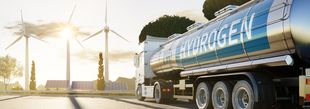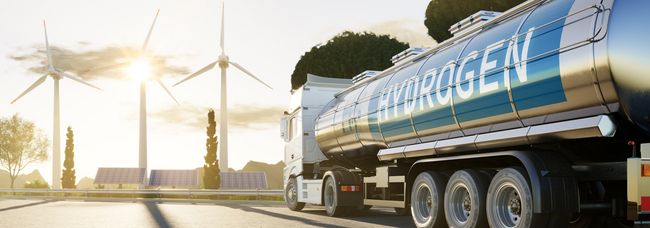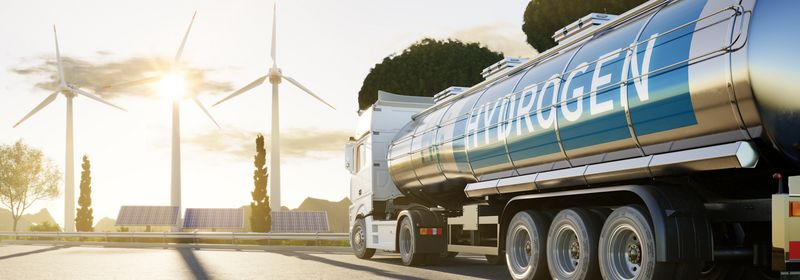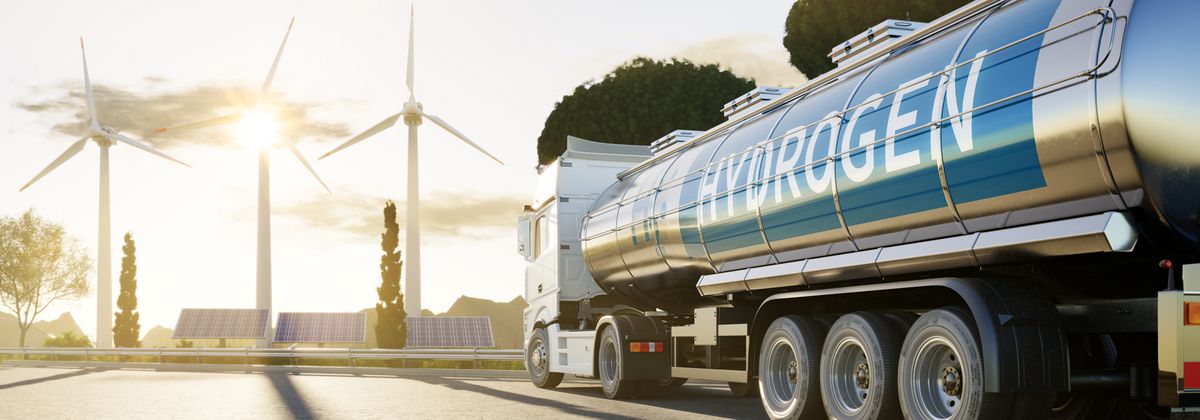TÜV NORD-H2-Label: Certification of Hydrogen, Hydrogen Derivatives and Industrial Gases
Hydrogen – Key to the Clean Energy Revolution
Hydrogen and hydrogen derivatives such as ammonia and methanol play a central role for the energy of the future, as their production is carbon neutral and they can also be used as energy storage media.
There are many possible applications: hydrogen and its derivatives can be used as a fuel, including vehicle fuel, and as a raw material. It can also be transported over long distances, which means easier import and export of climate-friendly energy.
Hydrogen technology is therefore considered as a vital key to the success of the clean energy revolution.
In order to achieve the set climate targets and reduce CO2 emissions, we must produce, transport and store hydrogen in a climate-friendly way.
Leading on from the political interest in renewables, many companies also want to prove to customers and shareholders that they act sustainably. This is where the TÜV NORD-H2-Label comes in.




The TÜV NORD-H2-Label
The TÜV NORD H2 label applies to hydrogen, hydrogen derivatives (ammonia, methanol, synthetic methane) and industrial gases (oxygen, nitrogen, carbon dioxide) which are produced through the use of 100 percent renewable energies. Manufacturers, energy suppliers, grid operators, transport service providers, importers and exporters of energy can use it to objectively demonstrate their climate credentials to their stakeholders.
Our criteria catalogue covers the process of producing hydrogen from electrolysers and, if desired, also hydrogen storage and transport. All other raw materials required for the production of hydrogen derivatives and industrial gases must also be produced or obtained using electrical systems based on renewable electrical energy.
Following successful assessment and certification, you will receive a test report and a certificate that entitles you to use the test mark. The certificate is valid for three years and is monitored on an annual basis.
The complete list of criteria can be found here:
Any questions? Just drop us a line
Would you like a proposal?
Benefits of Certification With the TÜV NORD-H2-Label
- Objective and trustworthy evidence of climate-friendly operation for the 3 label categories, as applied to production, transportation and other relevant areas.
- Also applies to hydrogen derivatives and industrial gases
- Can also be used for storage and transport of hydrogen, etc.
- 3 years validity, annual monitoring
- 3 label categories
- The scope of the assessment is flexible and can be extended
- Simplified multi-site monitoring
Questions and answers about the TÜV NORD-H2-Label
Do I only receive a label?
In addition to the label (test mark) you also receive a certificate and a test report.
There are three available categories for the TÜV NORD-H2-Label: “Ecological”, “Greenhouse gas compensated” and “Renewable”.
You determine the scope of the TÜV NORD-H2-Label. You choose whether you wish for certification for the entire chain of production, transportation and storage or if only certain areas should be covered.
With the TÜV NORD-H2-Label, you can testify to the carbon neutral production, storage and transportation of hydrogen, hydrogen derivatives (ammonia, methanol, synthetic methane) and industrial gases (oxygen, nitrogen, carbon dioxide).
You decide on the product or gas (e.g. hydrogen, ammonia, methanol) and the area (production, storage and/or transportation) to which the TÜV NORD-H2-Label should apply.
Yes.
No. there is no minimum plant size or gas volume, and no maximum number of operating hours.
You have to grant our assessors access to the documents which refer to the selected scope of assessment and – if required – access to the relevant production sites and all the relevant plant and installations. You must also ensure that, within the competitive market, the seal and the certificate are used so that any statements made under the label refer only to the actual scope of the certification (area of application, category, production site etc.). Any further conditions will be laid down in the individual offer.
Yes, you have to let us know in advance the area (production, storage, transportation) and the product (hydrogen, ammonia, methanol etc.) to be covered by the TÜV NORD-H2-Label. You also have to decide on the category of the label (Ecological, Greenhouse gas compensated, Renewable).
The hydrogen has to be produced by means of electrolysis. Additional process gases which are required for hydrogen derivatives must be produced or separated using electrical systems based on renewable electrical energy.
The assessment period is the period in which the balances between the raw materials and energy sources used in production and the products themselves are drawn up and compared. The assessment period for the TÜV NORD-H2-Label is one year.
The balancing is performed by our clients.
You can certainly add further sites to the scope of the label and certificate. Please let us know about this before commissioning of the site. All the criteria for the label (measuring equipment, balancing etc.) that apply for the original site must also be fulfilled at the new site. The addition of the new site must be approved by us. The new site will be considered as a separate item in the next monitoring procedure (surveillance audit) for the TÜV NORD-H2-Label.
The certificate is monitored annually (surveillance) and recertification is carried out every three years.
Taking into account the scope of the certification, the assessment period and the measured values, you draw up a balance sheet which covers the energies used and the products created as a result. Only products that lie within the scope of the TÜV NORD-H2-Label are considered during the balancing process. Any volumes of product which were manufactured outside the defined scope have to be declared, and must not be marketed under the TÜV NORD-H2-Label. Any product losses also have to be included in the balance.
The documents that are required will be established during the offer phase, as these depend on the products, the scope and the category of the label.
Interested? We are looking forward to your inquiry.
About TÜV NORD
TÜV NORD is an internationally recognized provider of inspection, testing and certification services. All over the world we assess and testify to the fulfilment of legal requirements and voluntary standards. Our assessors are experts in your area and work using standardised methods, so that we can ensure neutrality, independence and ongoing commitment to you and all our clients.